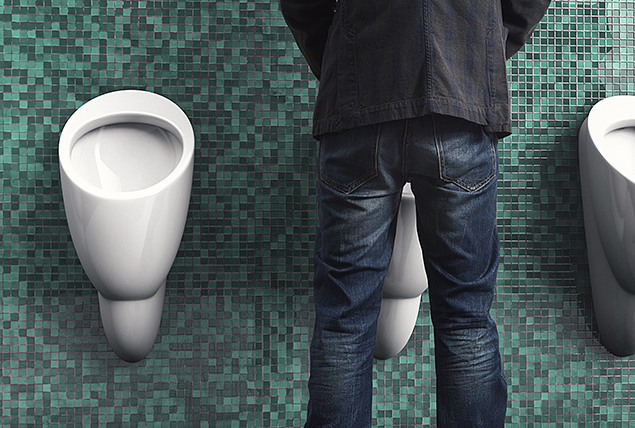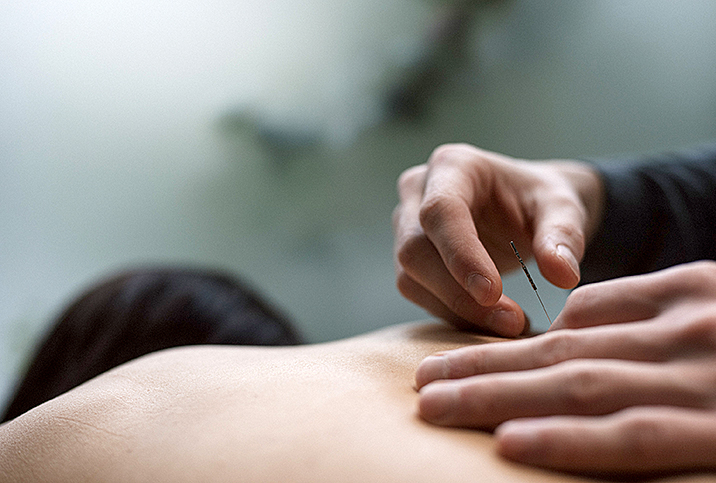How Much Do You Know About Prostatitis Diagnosis and Treatment?

The prostate gland is an essential part of the male reproductive apparatus. It just happens to be internal, so it's often overlooked unless and until a problem arises.
The gland sits just below the bladder at the start of the urethra, partially surrounding it and a structure called the bladder neck. The prostate is responsible for producing about 25 percent of semen, the fluid a man generates when he ejaculates, a fluid that provides sustenance and protection for the sperm cells on their journey.
Prostatitis is the most common urinary tract issue for men younger than 50. The condition is an inflammation of the prostate gland or of related, nearby structures in the pelvis that cause discomfort in the area. That discomfort may include pelvic pain, irritation, pain with urination, difficulty urinating, frequent urination, ejaculatory pain and other symptoms.
Avoiding the doctor out of fear or embarrassment can make a simple condition (like prostatitis) much more complicated.
It's one thing to know what prostatitis is, but how is the condition diagnosed and treated? What are its potential complications—including sexual health issues? Can it be prevented? What is the outlook for recovery or recurrence?
How is prostatitis diagnosed?
Symptoms that might trigger an evaluation for prostatitis can include the following:
- Pain in the lower pelvis, penis, testicles, perineum or lower back
- A frequent need to urinate
- Painful urination
- Weak or dribbling urine flow
- Urine flow that starts and stops
- Painful ejaculation or pain during sex
- Blood in the semen (hematospermia)
- Erectile dysfunction (ED)
The evaluation could include diagnostic procedures such as:
- Digital rectal exam. This first-line test checks for prostate swelling, pain or signs of cancer.
- Urinalysis. In order to check for bacterial forms of prostatitis, you might be asked to give a urine sample.
- Blood test. To help rule out prostate cancer or benign prostatic hyperplasia (BPH), a blood test to check for your prostate-specific antigen (PSA) levels might be ordered.
The most common type of prostatitis is chronic pelvic pain syndrome (CPPS), which affects 1 in 3 men, according to Cleveland Clinic. CPPS frequently involves pain and discomfort in other structures in the pelvic region as well as the prostate gland itself.
Diagnosing the bacterial forms of prostatitis is relatively simple, but the same cannot be said of CPPS. This form of prostatitis is often trickier to pin down. The symptoms potentially include referred pain—pain that's felt in a different part of the body—in any number of structures throughout the pelvic region.
Diagnosis may involve a visit to a pelvic floor specialist to help pinpoint specific areas of tenderness.
How is prostatitis treated?
The treatments for prostatitis vary depending on the form. The acute bacterial form of prostatitis is usually straightforward to treat: a course of antibiotics for 14 to 30 days.
If it's chronic bacterial prostatitis—bacteria in the prostate that doesn't respond to an initial round of antibiotics—treatment may be trickier. Your healthcare provider may prescribe up to three months of antibiotics in an attempt to sterilize the prostate. If that still doesn't clear the bacteria, long-term, low-dose antibiotics may help prevent recurrences.
Treating CPPS is often more complicated. Since so many parts of the region might be involved in the condition, the urology community has developed a system that allows providers to classify and treat symptoms separately across six categories.
The UPOINT system allows providers to give multiple treatments simultaneously, targeting only the specific symptoms you're experiencing. Since the system was widely implemented, up to 80 percent of men with CPPS show significant improvement using its tenets, according to Cleveland Clinic.
The following symptoms can be treated in any combination:
- Urinary. Medications such as tamsulosin (Flomax) are used to release the muscles around the prostate and bladder to help urine flow.
- Psychosocial. Some men's CPPS symptoms may be related to stress, anxiety and depression. Counseling and medications can help.
- Organ. Some studies have suggested that alternative medicine, such as bee pollen and quercetin, may help reduce swelling and inflammation in the prostate gland.
- Infection. If a bacterial infection is suspected, antibiotics may be prescribed.
- Neurologic. Neurogenic pain may include fibromyalgia and may cause pain in the legs and lower back. Prescription pain relievers such as amitriptyline (Elavil) often help.
- Tenderness. Pelvic floor therapy may include myofascial release—aka therapeutic massage—to relieve pain in specific pelvic floor muscles.
What complications can prostatitis cause?
Complications of acute bacterial prostatitis may include sepsis, a dangerous condition. It can cause extensive inflammation throughout the body that can lead to tissue damage and organ failure. Sepsis can become life-threatening. It doesn't affect everyone that way, but getting treated promptly is crucial.
"I've seen men all across the [pain] spectrum," said Neel Parekh, M.D., a men's fertility and sexual health specialist with Cleveland Clinic. "Some can be managed at home with antibiotics and conservative management, anti-inflammatories, sitz baths—things like that. But some guys can get very sick and require hospitalization or IV antibiotics. Sometimes it can develop into an abscess in the prostate that needs surgery or drainage. So it can definitely get pretty severe if left untreated."
The complications of CPPS can include chronic pain in the genitalia, perineum, rectum, lower back, buttocks, thighs and more.
It can cause men problems in the bedroom.
For starters, CPPS is associated with ED all on its own. In addition, if it's causing a man pain in his penis or testicles or causing him pain when he ejaculates, it can lead to a psychological link between sex and pain. That can worsen his ED.
"Obviously, it's a big issue," Parekh said. "There are a couple of issues going on. One, you have the pain itself. But then there are the psychological effects of chronic pain: depression, anxiety. All of that stuff can have a big effect on libido and erections."
How can you prevent prostatitis?
Preventing infection in your prostate gland is usually best achieved by getting prompt treatment if you suspect a urinary tract infection (UTI) or a sexually transmitted infection (STI). These types of infections can travel up the urinary tract and infect the prostate.
Also, go pee.
"The body's natural defense against infection is to urinate," Parekh said. "So the more you hold your urine, the more opportunity the bacteria have to multiply in the bladder, which can cause a bladder infection or prostatitis. Make sure you stay hydrated, drink plenty of fluid—hopefully, water—and make sure you're urinating appropriately every two to three hours and not holding your urine."
When it comes to CPPS, getting prompt treatment and not letting the condition develop is also important. Cleveland Clinic recommends making an appointment to see your provider right away if you notice ongoing pain or discomfort in your perineum or lower pelvic region when sitting, as it might be the first sign of CPPS.
Outlook for recovery or recurrence with prostatitis
The outlook is very positive for men with prostatitis.
Acute bacterial prostatitis usually responds well to antibiotics. In men with chronic bacterial prostatitis, antibiotics help ease symptoms in 30 percent to 60 percent of men. With CPPS, the UPOINT system has been shown to improve symptoms in up to 80 percent of men.
Conclusions
Prostatitis, in all its forms, is common and treatable; but as with many conditions involving the reproductive system, avoiding the doctor out of fear or embarrassment can make a simple condition much more complicated.
If you experience any of the symptoms described above, don't hesitate to get evaluated and get your treatment started right away.


















